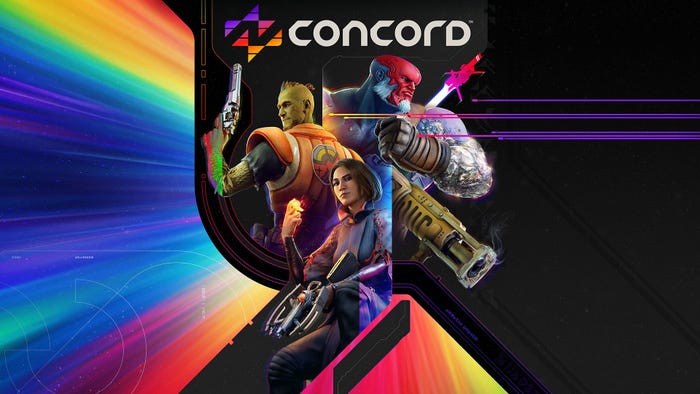
Featured Blog | This community-written post highlights the best of what the game industry has to offer. Read more like it on the Game Developer Blogs or learn how to Submit Your Own Blog Post
"Presence" is the new "fun" in VR
We're quick to quote presence as the defining characteristic of VR, but perhaps we should be looking for more? I reflect on the term "presence", its relationship to designing quality VR games and suggest perhaps we dig deeper as developers.

Unlike the last 40 years spent crafting experiences around drawing players into their screens, in virtual reality (VR) we literally, in many senses, drop the player into the middle of our games and ask their brains to trust us. When done well, the result is presence, the artificial supplanting of “for-realsies” reality with the one we have artfully constructed for our players. In other words, they think they are now there and not here.
But what does it mean to feel like you are somewhere? In movies or stories, we are at the mercy of the content creators’ style and presentation, left only to fill in blanks via our imagination. But imagination is not reality—if it were we could simply spirit ourselves away to far-off lands with some inspiration and a quiet space. While a healthy fantasy life is both fun and engaging, it’s clearly not the same as being somewhere…literally.
Here’s the contrast: as humans (who knows what animals get up to in their heads), we’ve never had the ability to transport ourselves elsewhere, other than physically. VR offers something different. In VR, by its very name, we are attempting to create a new reality. A new way to be somewhere…literally.
The earliest attempts at VR sought to simply provide alternative visual input, no doubt spurred by the seeming visual dominance of our perceptions of reality. If you could trick the eyes, surely you could trick the self? While the results were fascinating, and may have momentarily pulled the wool over our inner eyes, we weren’t fooled for long. Spending time in early “VR” didn’t feel all that reality-like for very long, if at all.
When VR burst back on to the public scene with the introduction of the Oculus DK1, many of us were extremely excited to see affordable technology in our near future. Recreating (my surely robust) digital fantasies of my ‘80s youth seemed nearly here. Still, the technology, while affordable and an exciting proof-of-concept, was nonetheless early days, and much time spent with that first moderate-latency rig left my stomach less convinced of the technical revolution than my brain.
Much to my (and many others) delight, the technology not only improved quickly, it rocketed ahead and a year later I was introduced to a virtually (see what I did there?) latency-free experimental rig by Valve that let me walk around. As someone that lives and breathes video-game development, the imminent potential for VR games was staggering, and I floated home on a giddy cloud of possibilities.
(As a side note, one need only demo one of these newest-age rigs to the uninitiated and wait for the “VR giggle” to re-affirm your faith in humanity and the future.)
Perhaps most fascinating was that with nausea out of the way, we were now able to sink our teeth into the question of presence. As present as one might feel on a rocking boat while barfing over the edge, the VR race to toss the rig before your berries didn’t leave much room to assess presence in those early rigs. Worse it often left a nausea hangover that lasted until a good night’s sleep. Thus while early iterations may have suggested prolonged presence wasn’t there, it may also have been because of the seasoned trepidation us early VRers took into each experience we built.
That first experience in nausea-free VR felt deeply present for a number of reasons, some of which were clearly undermined by immediate excitement at the quality (a notion that continues to plague developers as we run play tests with a world that has yet to lose its VR-ginity).
Aside from the novelty, however, I distinctly remember standing on a cube virtually 20 feet up and having the wily Doug Church casually suggest I “walk around a bit”. The thought not having occurred to me before (partly because you don’t walk around in video games, duh), I proceeded to take a confident step. Only I didn’t. Instead I approximated a dance somewhat akin to really needing to pee and having my feet in concrete. My brain, surveying the situation, had decided otherwise. Unconsciously and without a word until that moment, my brain had been convinced that I was certainly present enough.
Wow.
I’ve spent much of my career studying brains and human perception, and how we can create more believable experiences in games, and wow.
As I worked on more VR projects, however, and as the buzz of VR really started to take off and the term “presence” was absorbed and de-valued by well-meaning and excited enthusiasts, I started to think that true presence was not perhaps what we were necessarily chasing. What’s more, peoples’ assessments of “being there” varied wildly, even when engagement didn’t necessarily vary in turn, reducing the effectiveness of “presence” as a qualitative measure of experiences.
Are we really trying to create alternate realities, or alternate experiences? The answer to that question will likely depend on what you’re trying to do with VR. As game developers, the quick answer is to create new, engaging experiences that wouldn’t have been possible otherwise. Does that require the player to be wholly convinced that they are “there”? Do I feel that I am transported into a land of falling blocks when playing Tetris, for example? Clearly not, though arguably immersion takes me somewhere away from reality. Contrast that with say, Journey or Myst, where the goal is more of the transport-me-somewhere-else variety that many tend to assume of VR.
If we hold VR up to the presence stick are we doing a disservice or a favour to the caliber of content? Or is “presence”, in its most colloquial form, heading down the path of “fun”, really just serving to call out a game that is in rig vs. out? To be clear, I think the “historical”, pre-second-coming-of-VR use of “presence” is a very useful measure for understanding human cognition and things related, and it does inform game design in VR and out. However, hearing folks utter “I felt so present” in amazement, while rewarding, is less useful to us as developers as is understanding what engages people in VR (when the shine wears off) and how our environments instil believability and agency (as consistent with the intended experience). To be sure, simply experiencing presence in a virtual reality is very cool,but I don’t think it is exclusive hallmark of quality VR content.
Of late, I’ve taken to using my notion of a fidelity contract, the unspoken expectations our games inspire in our players, as an important part of creating interactive VR experiences (vs. more passively consumed content). Whether a game makes you feel present or not is reduced in importance, instead drawing attention to the affordances of your artificial environment. The measure of a successful (interactive) VR experience then becomes more about whether what the player wanted to do in that environment was fulfilled, and if they felt agency. While this can lead to high degrees of presence, it allows for experiences where you feel less present in the literal sense but are otherwise engaged or even deeply immersed.
One thing is for sure, being in a VR rig does not give you presence for free, it just sets you up to design experiences that can perhaps genuinely transport the player away, at least in their mind.
Read more about:
Featured BlogsAbout the Author
You May Also Like








.png?width=700&auto=webp&quality=80&disable=upscale)
.png?width=700&auto=webp&quality=80&disable=upscale)